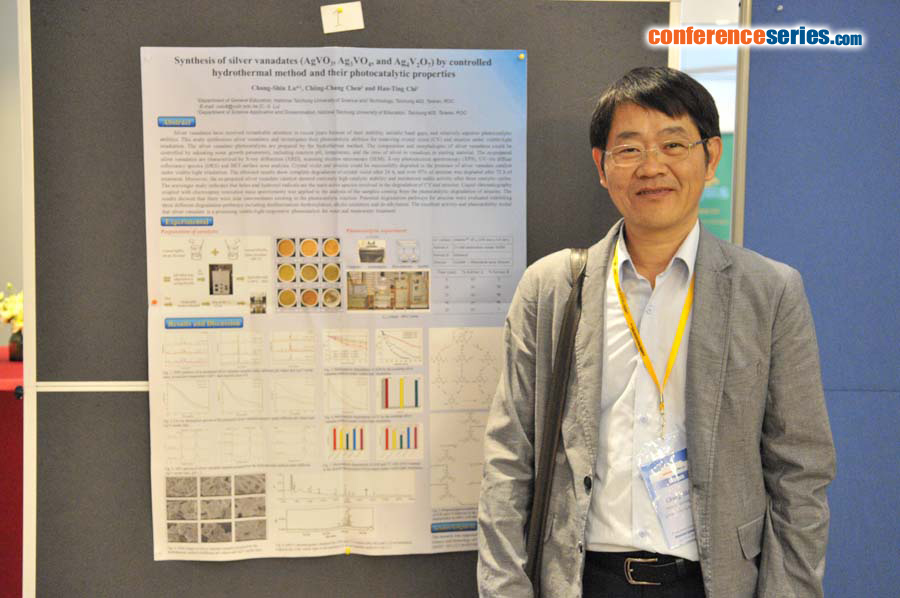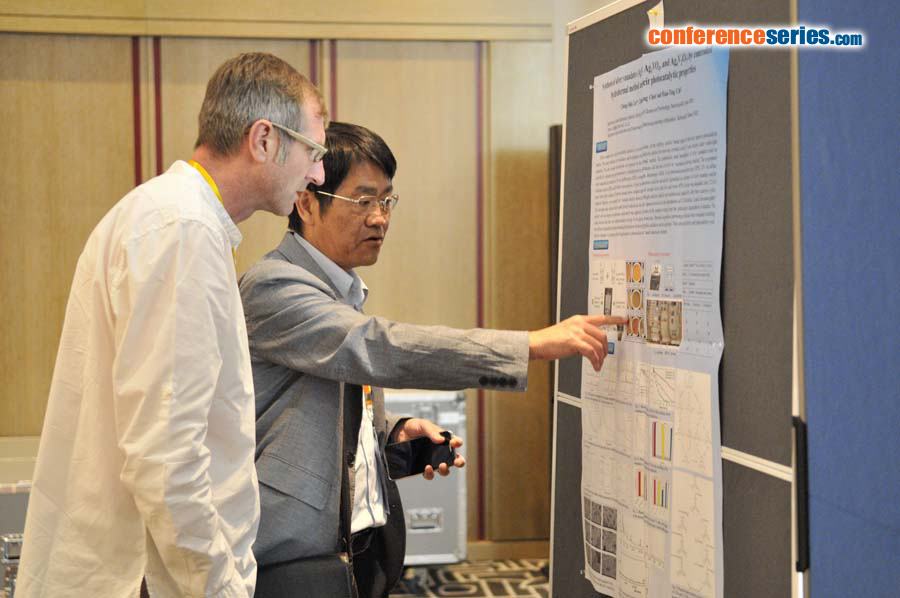
Chung-Shin Lu
National Taichung University of Science and Technology, Taiwan
Title: Synthesis of silver vanadates (AgVO3, Ag3VO4, and Ag4V2O7) by controlled hydrothermal method and their photocatalytic properties
Biography
Biography: Chung-Shin Lu
Abstract
Silver vanadates have received remarkable attention in recent years because of their stability, suitable band gaps, and relatively superior photocatalytic abilities. This study synthesizes silver vanadates and investigates their photocatalytic abilities for removing crystal violet (CV) and atrazine under visible-light irradiation. The silver vanadate photocatalysts with high photocatalytic performance are prepared by the hydrothermal method. The composition and morphologies of silver vanadates could be controlled by adjusting some growth parameters, including reaction pH, temperature, and the ratio of silver to vanadium in starting material. The as-prepared silver vanadates are characterized by X-ray diffraction (XRD), scanning electron microscopy (SEM), X-ray photoelectron spectroscopy (XPS), UV–Vis diffuse reflectance spectra (DRS) and BET surface area analysis. It is demonstrated that AgVO3, Ag3VO4, and Ag4V2O7 can be selectively prepared through the hydrothermal method. Diffuse UV–Vis spectra show the three materials being the indirect semiconductors with optical bandgaps of 1.85–2.33 eV. Crystal violet and atrazine could be successfully degraded in the presence of silver vanadate catalyst under visible-light irradiation. The obtained results show complete degradation of crystal violet after 24 h, and over 97% of atrazine was degraded after 72 h of treatment. Liquid chromatography coupled with electrospray ionization mass spectrometry was applied to the analysis of the samples coming from the photocatalytic degradation of atrazine. The experimental results showed that there were nine intermediates existing in the photocatalytic reaction. Potential degradation pathways for atrazine were evaluated exhibiting three different degradation pathways including dechlorination–hydroxylation, alkylic-oxidation and de-alkylation. This is a study to show the superior activities of AgVO3, Ag3VO4, and Ag4V2O7 as a promising visible-light-responsive photocatalyst.






